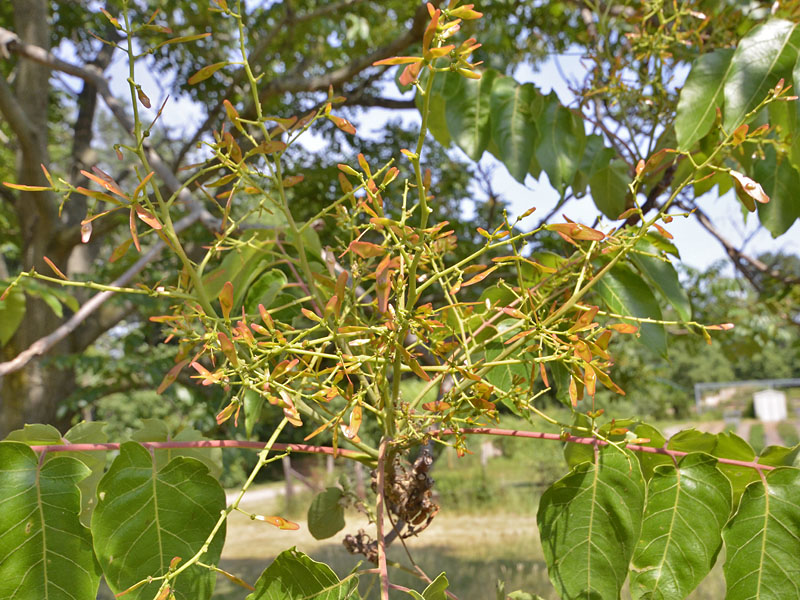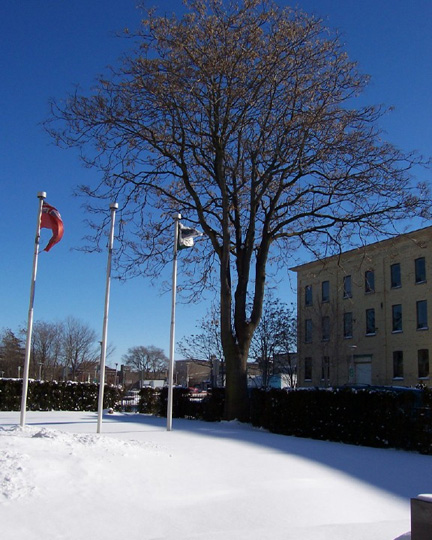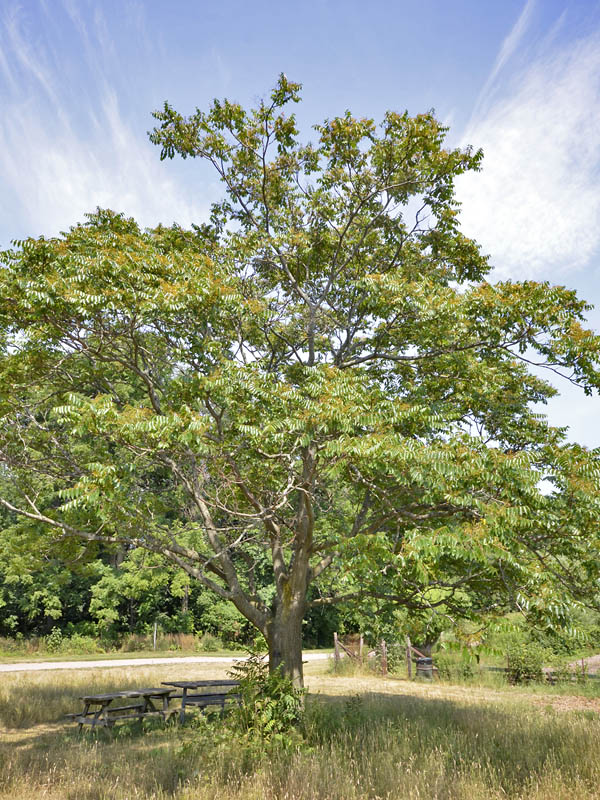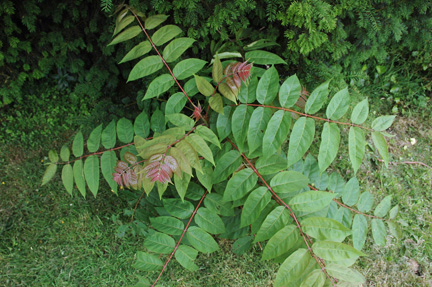
Woody > Ailanthus > Ailanthus altissima > Ailanthus altissima
Ailanthus altissima
Tree of Heaven
Origin: China. (From ailanto, native name meaning 'reaching for the sky.')
| Family |
| Simaroubaceae |
| Genus |
| Ailanthus |
| Species |
| altissima |
| Category |
| Woody |
| Type |
| Tree (deciduous) |
| Pronunciation |
| USDA Hardiness Zone |
| 7b - 8a |
| Canadian Hardiness Zone |
| 7b - 8a |
| RHS Hardiness Zone |
| H5 |
| Temperature (°C) |
| -15 |
| Temperature (°F) |
| 5 |
| Height |
| 20 m |
| Spread |
| 10 m |
Photographs
Description and Growing Information
Flowering Period
| General Description |
| An aggressive, fast growing tree often confused in our area with Juglans nigra. |
| Landscape |
| Should not be used in the landscape. |
| Cultivation |
| This tree will grow almost anywhere, from the smallest crack in the pavement to the cultivated landscape. |
| Shape |
| Large somewhat rounded crown. |
| Growth |
| Fast |
| ID Characteristic |
| The pinnately compound leaves with a small gland at the base of each of the leaflets. Bitterly aromatic foliage when crushed. |
| Pests |
| Generally pest and disease free. |
| Habitat |
| Naturalized throughout Southern Ontario and the United States. |
| Bark/Stem Description |
| Beige, on older bark, young twigs often downy and similar in texture to Rhus typhina. |
| Flower/Leaf Bud Description |
| Buds are small, held above the leaf scar and somewhat downy. |
| Leaf Description |
| The pinnately compound leaves with a small gland at the base of each of the leaflets. Bitterly aromatic foliage when crushed. Leaves are large, up to 60 cm long. New leaves are a bronze brown upon emergence. |
| Flower Description |
| Large cream to green blooms in June or July. Dioecious, males having the smell of the crushed leaves while female flowers have no scent. |
| Fruit Description |
| A light beige samara, 1.5-2 cm long. |
| Colour Description |
| A weak pale yellow in the autumn. |
| Texture Description |
| A coarse textured tree. |
| Notable Specimens |
| Abandoned lots in most cities from Toronto south. |
| Propagation |
| Self propagating without our help. Root cuttings collected in the autumn and cut into 50 cm lengths and inserted vertically into pots or flats barley covering the top. Water and place in a cold frame until growth appears and then pot individually. |
_form copy.jpg)

_lf copy.jpg)
_sum copy.jpg)


